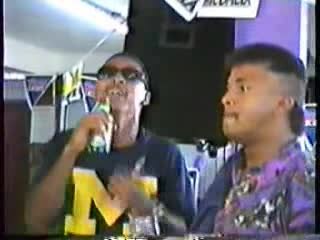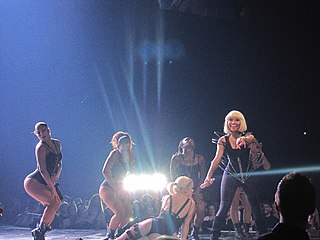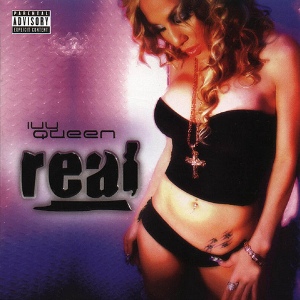Latin hip hop is hip hop music that is recorded by artists in the United States of Hispanic and Latino descent, along with Spanish-speaking countries in the Caribbean, North America, Central America, South America, and Spain.

The music of Puerto Rico has evolved as a heterogeneous and dynamic product of diverse cultural resources. The most conspicuous musical sources of Puerto Rico have included European, Indigenous, and African influences, although many aspects of Puerto Rican music reflect origins elsewhere in the Caribbean. Puerto Rican music culture today comprises a wide and rich variety of genres, ranging from essentially indigenous genres like bomba to recent hybrids like Latin trap and reggaeton. Broadly conceived, the realm of "Puerto Rican music" should naturally comprise the music culture of the millions of people of Puerto Rican descent who have lived in the United States, and especially in New York City. Their music, from salsa to the boleros of Rafael Hernández, cannot be separated from the music culture of Puerto Rico itself.

Reggaeton, also known as reggaetón and reguetón, is a music style that originated in Panama during the late 1980s. It was later popularized in Puerto Rico.

Tegui Calderón Rosario is a Puerto Rican rapper, singer and actor. He began his musical career in 1996 and was supported by the famous Puerto Rican rapper Eddie Dee, who invited him on his second studio album, El Terrorista De La Lírica, released in 2000. Calderón reached international success in 2003 with his first album, El Abayarde, which sold 300,000 copies worldwide and was nominated for a Latin Grammy Award. His importance in reggaeton music led him to participate in Eddie Dee's 12 Discípulos album in 2004. He released three more studio albums between 2006 and 2015, varying in styles, focusing more in hip hop and African music rather than reggaeton in The Underdog (2006) and El Abayarde Contraataca (2007). His fourth studio album, El Que Sabe, Sabe, released in 2015, won a Latin Grammy Award for Best Urban Music Album. In the same year, he announced that he is planning a studio album alongside the Puerto Rican reggaeton and pop singer Yandel titled El Blanco Y El Negro.
Hip hop music arrived in Cuba via radio and TV broadcasts from Miami. During the 1980s hip hop culture in Cuba was mainly centered on breakdancing. But by the 1990s, with the collapse of the Soviet Union and the onset of the Special Period, young raperos, exposed to foreign tourists whose wealth highlighted their struggle, turned to rapping to affirm their cubanidad and advocate for further revolutionary reforms.

Martha Ivelisse Pesante Rodríguez, known professionally as Ivy Queen, is a Puerto Rican singer, rapper, songwriter, and actress. She is considered one of the pioneers of the reggaeton genre, commonly referred to as the Queen of Reggaeton.
Sandungueo, also known as Perreo, is a style of dance and party music associated with reggaeton that emerged in the late 1980s in Puerto Rico. This style of dancing and music was created by DJ Blass, hence his Sandunguero Vol. 1 & 2 albums and popularized and spread worldwide by the website Sandungueo.com.
Karrine Steffans is an American author, most notably of the Vixen series of books. She has worked as an actress and as a video vixen, having appeared in more than 20 music videos. In 2007 and 2008, Steffans visited a number of college campuses to speak about her involvement in the hip hop industry and its expectations of women.

A video vixen is a female model who appears in hip hop-oriented music videos. The video vixen image has become a staple in popular music, especially within the genre of hip hop. The video vixen came around in the late 80s when hip-hop began to break off into its own lifestyle. It was popularized in American culture during the 90s and early 00s. Many video vixens are aspiring actors, singers, dancers, or professional models. Artists and vixens have been criticized for allegedly contributing to the social degradation of black women.
Bachatón is a fusion genre of reggaeton from Puerto Rico and bachata from the Dominican Republic. Bachaton combines bachata melodies and reggaeton style beats, lyrics, rapping, and disc jockeying. The word "bachatón" is a combination of "bachata" and "reggaeton". "Bachatón" was coined and widely accepted in 2005. It is a subgenre of reggaeton and bachata.

Real is the fourth studio album by Puerto Rican reggaetón recording artist Ivy Queen, released on November 21, 2004, by Universal Music Latino. Initially to be Queen's debut full-length English-language studio album, it featured collaborations with hip hop and fellow Latino artists Hector El Father, Fat Joe, Getto & Gastam, La India, Gran Omar and Mickey Perfecto. The album was primarily produced by Rafi Mercenario, and included guest production by American producer Swizz Beatz, Puerto Rican producers Ecko, Noriega, Monserrate and DJ Nelson. The executive producers were Goguito "Willy" Guadalupe, Gran Omar and Ivy Queen.
Misogyny in rap music refers to lyrics, videos, or other aspects of rap music that support, glorify, justify, or normalize the objectification, exploitation, or victimization of women. It is an ideology that portrays women as objects for men's ownership, use, or abuse. It diminishes women to expendable beings. It can range from innuendoes to stereotypical characterizations and defamations.
The Myth of the Latin Woman is a non-fiction essay written by Puerto Rican author Judith Ortiz Cofer.
Hip hop feminism is a sub-set of black feminism that centers on intersectional subject positions involving race and gender in a way that acknowledges the contradictions in being a black feminist, such as black women's enjoyment in hip hop music and culture, rather than simply focusing on the victimization of black women in hip hop culture due to interlocking systems of oppressions involving race, class, and gender.

"Chika Ideal" is a song by Puerto Rican recording artist Ivy Queen from her fourth studio album Real (2004). It was written by Martha Ivelisse Pesante, produced by Rafi Mercenario and released as the lead single from the album in May 2004 on Universal Music Latino and Perfect Image.
Misogynoir is a term referring to misogyny directed towards black women where race and gender both play a role. The term was coined by black feminist writer Moya Bailey in 2010 to address misogyny directed toward black transgender and cisgender women in American visual and popular culture. The concept of misogynoir is grounded in the theory of intersectionality, which analyzes how various social identities such as race, gender, class, and sexual orientation interrelate in systems of oppression.
In hip hop, the term mami refers to an attractive Latina woman, typically of Puerto Rican or Dominican descent. There is also the emergence of the mami video vixen, who is the glamorized, hyper-sexualized version of an attractive Latina woman that is seen in rap videos. The image of mami that is the most popular in rap culture is the butta pecan mami, a term coined by Raquel Z. Rivera, which refers to a Latina woman who has light golden colored skin and "good" (European-type) hair.

Women have made significant contributions to Latin music, a genre which predates Italian explorer Christopher Columbus' arrival in Latin America in 1492 and the Spanish colonization of the Americas. The earliest musicians were Native Americans, hundreds of ethnic groups across the continent, whose lyrics "reflect conflict, beauty, pain, and loss that mark all human experience." Indigenous communities reserved music for women, who were given equal opportunities with men to teach, perform, sing, and dance. Ethnomusicologists have measured ceramic, animal-bone, and cane flutes from the Inca Empire which indicate a preference for women with a high vocal range. Women had equal social status, were trained, and received the same opportunities in music as men in indigenous communities until the arrival of Columbus in the late 15th century. European settlers brought patriarchal, machismo ideologies to the continent, replacing the idea of equality between men and women. They equated native music with "savagery" and European music with "civilization". Female musicians tended to be darker-skinned as a result of the slave trade, and contemporary society denigrated music as a profession. Latin music became Africanized, with syncopated rhythms and call-and-response; European settlement introduced harmony and the Spanish décima song form.
Urbano music or Latin urban is a transnational umbrella category including many different genres and styles. As an umbrella term it includes reggaeton, dancehall, dembow, urban champeta, funk carioca and Latin hip hop. The commercial breakthrough of this music took place in 2017. Artists in the style collaborate transnationally, and may originate from the United States including Puerto Rico in particular, Colombia, Cuba, the Dominican Republic, Panama, Venezuela or other Spanish-speaking nations, as well as Portuguese-speaking Brazil.







